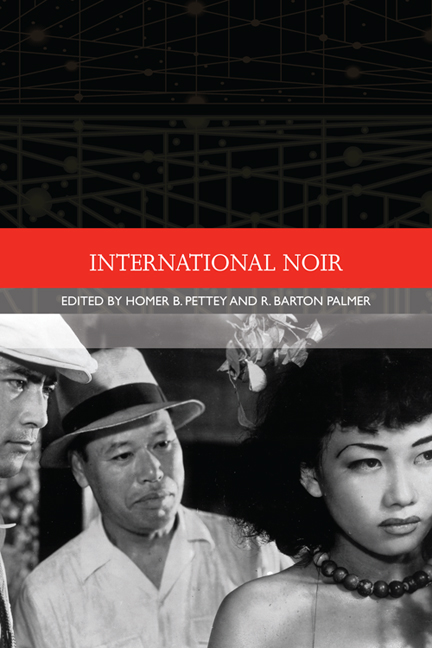Book contents
- Frontmatter
- Contents
- List of Illustrations
- Acknowledgements
- Notes on the Contributors
- Traditions in World Cinema
- Introduction: The Noir Impulse
- 1 British Noir
- 2 French Noir 1947–79: From Grunge-noir to Noir-hilism
- 3 French Neo-noir: An Aesthetic for the Policier
- 4 Early Japanese Noir
- 5 The Gunman and the Gun: Japanese Film Noir since the Late 1950s
- 6 Darker than Dark: Film Noir in its Asian Contexts
- 7 Nordic Noir and Neo-noir: The Human Criminal
- 8 Indian Film Noir
- 9 The New Sincerity of Neo-noir
- 10 Post-noir: Getting Back to Business
- Selected Bibliography of International Film Noir
- Selected Filmography of International Film Noir
- Index
9 - The New Sincerity of Neo-noir
Published online by Cambridge University Press: 05 August 2016
- Frontmatter
- Contents
- List of Illustrations
- Acknowledgements
- Notes on the Contributors
- Traditions in World Cinema
- Introduction: The Noir Impulse
- 1 British Noir
- 2 French Noir 1947–79: From Grunge-noir to Noir-hilism
- 3 French Neo-noir: An Aesthetic for the Policier
- 4 Early Japanese Noir
- 5 The Gunman and the Gun: Japanese Film Noir since the Late 1950s
- 6 Darker than Dark: Film Noir in its Asian Contexts
- 7 Nordic Noir and Neo-noir: The Human Criminal
- 8 Indian Film Noir
- 9 The New Sincerity of Neo-noir
- 10 Post-noir: Getting Back to Business
- Selected Bibliography of International Film Noir
- Selected Filmography of International Film Noir
- Index
Summary
NOIR AND NEW NOIR
If one truth has emerged from the intense scholarly debate during the last two decades over the nature of Old Hollywood, it is that the writing of American film history must avoid the essentialist trap of considering the so-called ‘classical text’ of that era as a relatively undifferentiated flow of product whose watchwords were sameness and conformity. A correlative of this truth is that New Hollywood filmmaking, even with its emphasis on package production (with each film in some sense a unique entity unto itself), still offers regular forms of textuality that differ from those of the studio era only in subtle, not in fundamental, ways. Thus the two distinct periods of Hollywood history are characterised by complex forms of continuity and discontinuity, as exemplified by the film noir phenomenon, whose two periods (classic and neo-noir) mirror larger changes in the industry even as they bespeak underlying continuities in the national cinema and the public taste it strives to satisfy.
This chapter is devoted to the neo-noir phenomenon in Hollywood, and it bears remarking that a similar renovating secondariness manifests itself as well in some other national cinemas, whose post-classical noir traditions are dealt with in other chapters in this volume. Beginning with the genre revisionist work of noted Hollywood Renaissance auteurs in the early 1970s, American neo-noir is much too extensive, having endured now for more than four decades, more than twice the temporal reach of the original series, to be surveyed adequately in a brief essay. Instead, my hope here is to trace some of the general features of the phenomenon through a sustained focus on two noteworthy and exemplary releases, Body Heat (Lawrence Kasdan, 1980) and The Man Who Wasn't There (Joel and Ethan Coen, 2001), which bookend the period of neo-noir's greatest popularity. Both of these films connect, if in radically different ways, to James M. Cain's novels Double Indemnity and The Postman Always Rings Twice (both 1936), as well as to the Old Hollywood film versions (Billy Wilder, 1944 and Tay Garnett, 1946 respectively). These films are foundational early entries in the classic noir series and are discussed at length in earlier chapters of the companion volume to this one.
- Type
- Chapter
- Information
- International Noir , pp. 193 - 219Publisher: Edinburgh University PressPrint publication year: 2014



